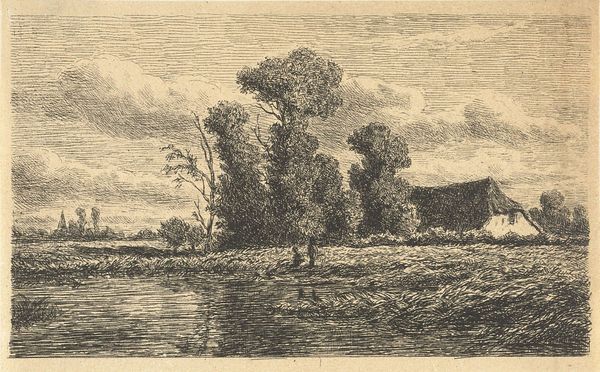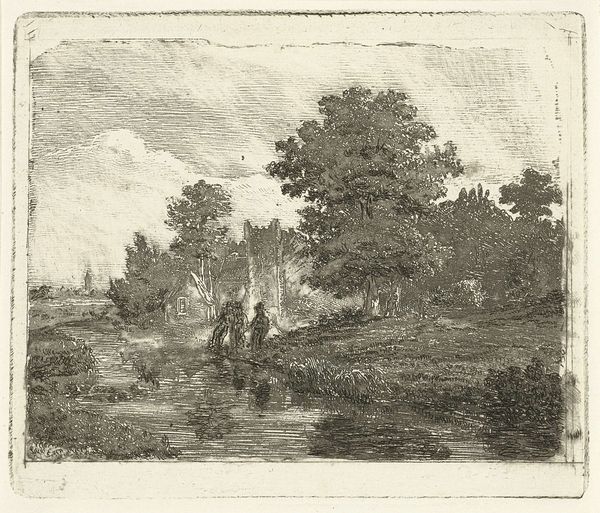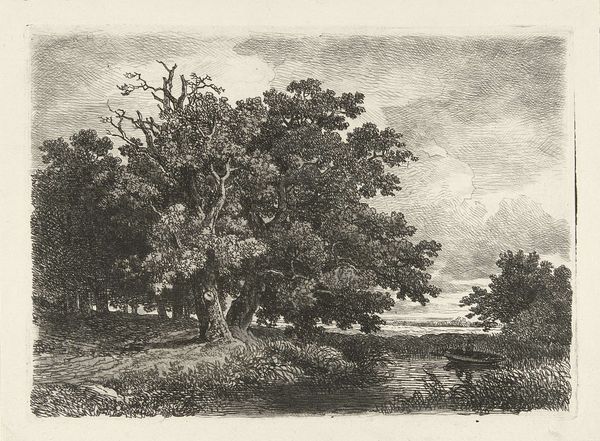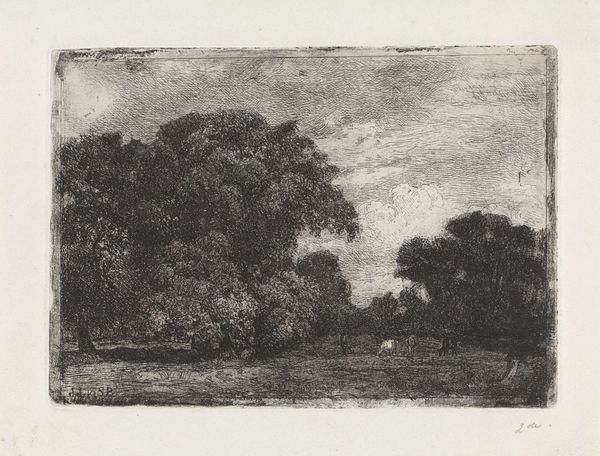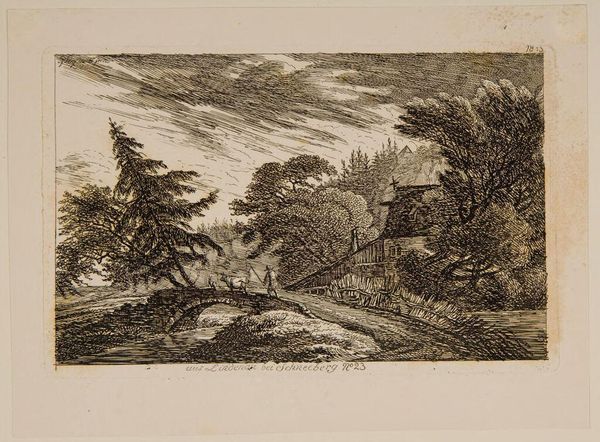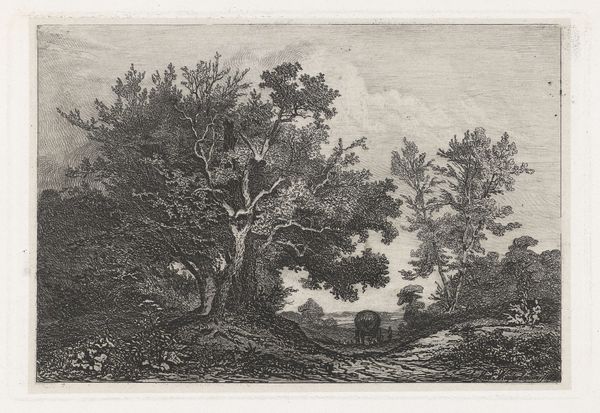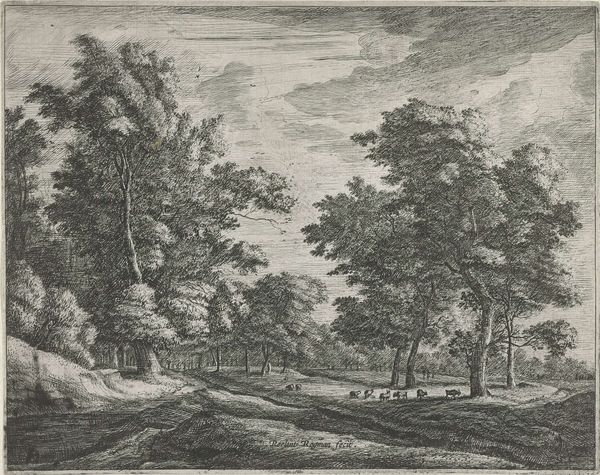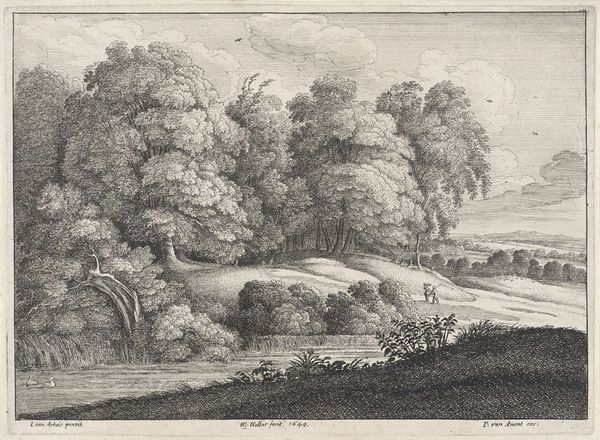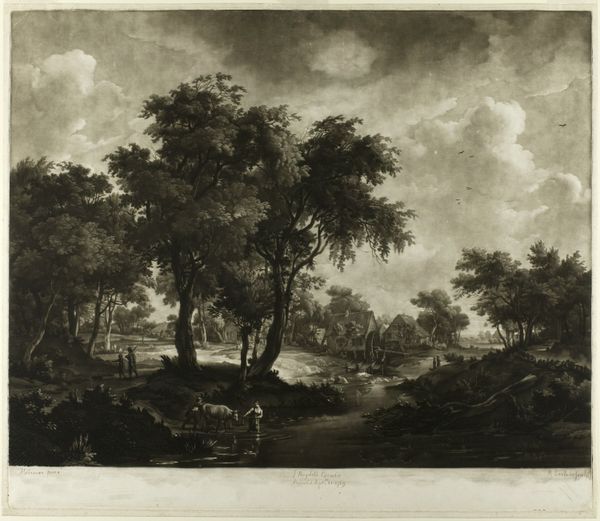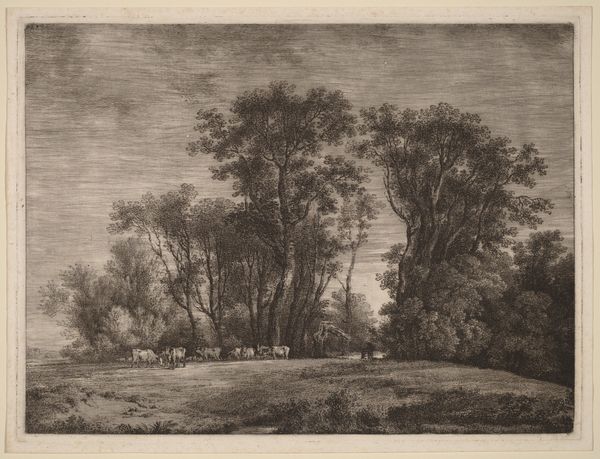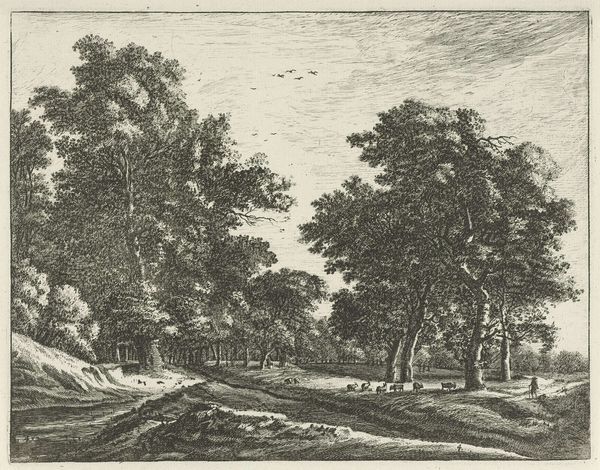
print, engraving
# print
#
landscape
#
engraving
#
realism
Dimensions: image: 15.24 × 25.24 cm (6 × 9 15/16 in.) sheet: 20.96 × 29.85 cm (8 1/4 × 11 3/4 in.)
Copyright: National Gallery of Art: CC0 1.0
Curator: Let’s turn our attention to “Edge of the Pasture,” a 1935 engraving by Thomas W. Nason. Editor: It's stunning; the level of detail he’s achieved with just line work is pretty impressive. There's a really tranquil feeling too. Curator: Nason was very invested in portraying rural American landscapes. He wanted to reflect on agrarian life and New England heritage as it evolved during the 20th century. This print is a very nostalgic nod to that cultural moment. Editor: The amount of labor that would go into a piece like this is what gets me. I wonder about the physical strain of making so many precise cuts. The sheer number of marks he made just to evoke the texture of those trees... and what tools were available? That matters! Curator: Absolutely. His technique echoes the wood engravings popular in the 19th century. Printmaking during this time allowed for wider access to art, and we see it gaining traction in homes and public spaces, shifting the art’s availability beyond traditional elites. Editor: I can see it fitting nicely in an ordinary home, where a farmer, say, might reflect on their own connection with the land. He gives each tree a different silhouette, which is nice...almost a visual census. Curator: Interesting take. And that sky is very evocative too. I wonder how regional weather patterns affected people’s emotional connections to specific locations? Perhaps those shifting cloud formations acted as a backdrop that spoke directly to the social mood. Editor: Maybe the materials used have regional significance too? Was he using wood or metal that had connections to local trade? Everything in a scene like this has a story to tell about the community from where it was sourced. Curator: Food for thought! Seeing "Edge of the Pasture," it certainly invites me to think more deeply about art as both a cultural artifact and a representation of everyday life in rural America. Editor: Exactly. For me, understanding how art is constructed always heightens my sense of connection with it. To truly experience an artwork is to acknowledge the unseen work involved.
Comments
No comments
Be the first to comment and join the conversation on the ultimate creative platform.
